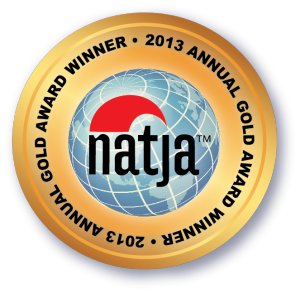Baby boomer travel

These women’s shoes from Therafit are specially designed for wide feet. Photo from Therafit Shoe
A comfortable pair of shoes, well broken in, is a necessity when traveling.
There’s nothing worse than discovering that, on the second day of your trip, your first day of walking around an exciting new city or pastoral countryside has left you with painful, blistered feet.
I should know — because, with age, my feet have been doing weird things. I’ve gone from a longtime size 10 shoe to a 10 1/2 and, more recently, to something like a size 10 3/4 or maybe size 10 7/8 — except nobody makes those for the mass market, to my knowledge. So I go with size 11, and sometimes those slip on my heel.
A good travel shoe also has to offer sole support and, preferably, not look too tourist-dorky. For me, that’s been a difficult combo… Continue reading

The Deluxe Veranda staterooms on Viking Ocean ships are terrific, if you can afford them. Photo from Viking Cruises.
Note: This is the first in a series of posts about how to get the best value for your cruise dollar.
Which cabin you choose can mean a difference of hundreds or even thousands of dollars in your cruise fare. Along with the general luxury level of the cruise line itself, the length of your cruise — and your ability to restrain yourself at the casino, bar, or art auction — your cabin category is likely to be the main variable in the entire cost of your cruise.
How do most cruise lines price their cabins and suites? Three general rules usually come into play:
- The higher the deck, the higher the price of the cabin.
- The bigger the room, the higher the price.
- The better the water view, the… Continue reading

Holland — er, the Netherlands — is known for its tulips, among other delights. Photo by Rachel Kramer on flickr
As of January 1, 2020, “Holland” — the storied land of wooden shoes, windmills, bicycles, and tulips — is no more.
Did it finally succumb to flooding, with little Dutch children no longer able to stick their fingers in the dykes to hold back the rushing waters?
No, the country isn’t disappearing, just its commonly used monniker.
It seems that the name “Holland” has fallen victim to a government rebranding effort designed to ease overtourism in Amsterdam and its nearby tourist magnets such as The Hague, Delft, and Haarlem, all part of historical Holland.
The official name of the country — the Netherlands — encompasses more than historical Holland, and the Dutch government is spending €200,000 on the rebranding so that tourists will expand their horizons and visit its… Continue reading
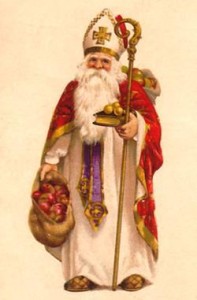
The original St. Nicholas was a bishop in what is now modern-day Turkey, and is sometimes depicted with a Santa Claus beard.
From all of us here at clarknorton.com!
May your stockings be full and your travels be fulfilling, and please remember those in need during the holiday season and throughout the coming year.
Thanks for reading and
With best wishes,
Clark, Catharine, Rocky, and Jake
Thanks to the hiking site Riders Trail for this informative and entertaining infographic on hiking safely with a dog.
Dogs need walking, of course, which provides exercise for both canine and human, but hiking with your dog can take the benefits of exercise to a new level, for baby boomers and younger generations alike.
Still, there are a number of considerations to keep in mind before you leash up your pet, and Riders Trail does a good job of highlighting them:
- Making sure your dog is suitable for hiking
- Finding dog-friendly hiking locations
- Preparing your dog for hiking
- Adhering to trail etiquette
- Carrying along the right supplies
- And dealing with potential threats
Plus, the dog pictures are downright cute. Even if you don’t have a dog, you may enjoy checking them out.
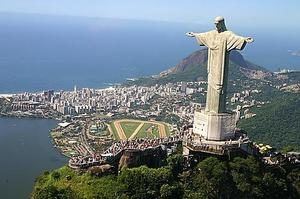
Rio de Janeiro is one port on an Oceania cruise to South America. Photo from riodejaneiro.com.
Oceania is near the top of my list of favorite cruise lines.
It features mid-sized ships, in the 600 to 1,250 passenger range, interesting itineraries covering much of the world, and terrific food — or, as their ads put it, “the finest cuisine at sea.” In my experience — which includes two Oceania Mediterranean cruises — this is no exageration.
Oceania cruises are ideal for baby boomers — the atmosphere onboard is refined and the passengers tend to be older adults.
The cruise line is rolling out two new ships, one in 2022 and another in 2025, the first two in its new 1,200-passenger Allura-Class line.
And now for the good news: Oceania is currently conducting a contest to name the 2022 ship, with a top prize of a free inaugural cruise for two… Continue reading
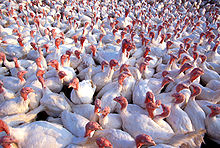 Here are the answers to the Happy Thanksgiving Day Quiz in my most recent post. Let me know how you did!
Here are the answers to the Happy Thanksgiving Day Quiz in my most recent post. Let me know how you did!
1.Which historical figure is most identified with Thanksgiving in America?
a. The Earl of Cranberry
b. Davy Crockett
c. The Sultan of Turkey
d. Governor William Bradford
Answer: D — Governor William Bradford of Plymouth Colony, who is said to have declared the colony’s first Thanksgiving feast in 1621.
2. Who invented the green bean casserole, and when?

Dorcas Reilly’s recipe has sold countless cans of mushroom soup.
a. Betty Crocker in 1949
b. Dorcas Reilly in 1955
c. Fanny Farmer in 1930
d. Julia Child in 1963
Answer: B — Dorcas Reilly in 1955. Reilly was a product developer for the Campbell Soup Company, where she came up with the idea for green bean casserole, which of course uses Campbell’s cream of mushroom soup.… Continue reading

How many Americans eat turkey on Thanksgiving?
Yes, it’s time for another Thanksgiving Day Quiz, in which we delve into the history and mystery of this beloved and occasionally berated travel-related holiday, when most everyone in the United States either heads to Grandma’s house or Grandma flees to the buffet at Golden Corral.
Either way, there’s bound to be turkey, stuffing, cranberry sauce, potatoes, gravy, green bean casserole, pumpkin pie and at least one relative who hits the sauce too much, cranberry or otherwise. It’s a quintessential American holiday, epitomized by gluttonous portions of food, football, parades, family, friends, and, of course, traffic jams and overcrowded airports.
But how much do you really know about it? Here’s the quiz, and Happy Thanksgiving!

Cranberries
1. Which historical figure is most identified with Thanksgiving in America?
a. The Earl of Cranberry
b. Davy Crockett
c. The Sultan of Turkey
d. Governor William… Continue reading
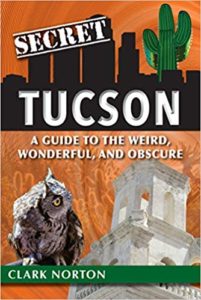 I’m pleased to announce that my latest book, Secret Tucson, has been published by Reedy Press of St. Louis and is now available for purchase at Tucson area bookstores, online at Amazon.com, or from Reedy Press.
I’m pleased to announce that my latest book, Secret Tucson, has been published by Reedy Press of St. Louis and is now available for purchase at Tucson area bookstores, online at Amazon.com, or from Reedy Press.
What’s Secret Tucson about? The subtitle, A Guide to the Weird, Wonderful, and Obscure says it all, though I would add you’ll find such nuggets as:
What one time New York crime boss spent his last decades in Tucson?
Why does the Beatles’ classic song “Get Back” include a nod to Tucson?
Why is Tucson a must stop on many treasure hunters’ maps — and where can you search for a fortune in gold?
Where was John Dillinger captured in Tucson in 1934 after a series of blunders by his gang?
What locale is home to both the country’s southernmost ski resort and a World War II Japanese-American relocation camp?… Continue reading
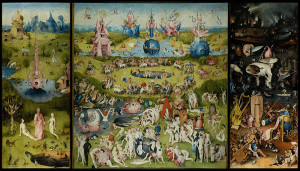
First setting eyes on The Garden of Earthly Delights, by Hieronymous Bosch, was for me a numinous experience
Previously, I wrote about hodophobia: the fear of travel, and some ways to conquer it.
Today’s topic is a bit more fun and upbeat: some less-known — and generally quite obscure — terms that reflect the essence of the love and fascination of travel. (Some aren’t confined strictly to travel, but offer insight into it.) Some of the terms are from English, and some from other languages.
The latter are particularly interesting to me because they capture some nuances that English does not. (And because of that, I may miss some of that nuance — so if you’re among the native Portuguese, German, or Swedish speakers who follow this blog, please free to correct me.)
Let’s start with a pure travel term that’s the opposite of hodophobia: hodophilia.







